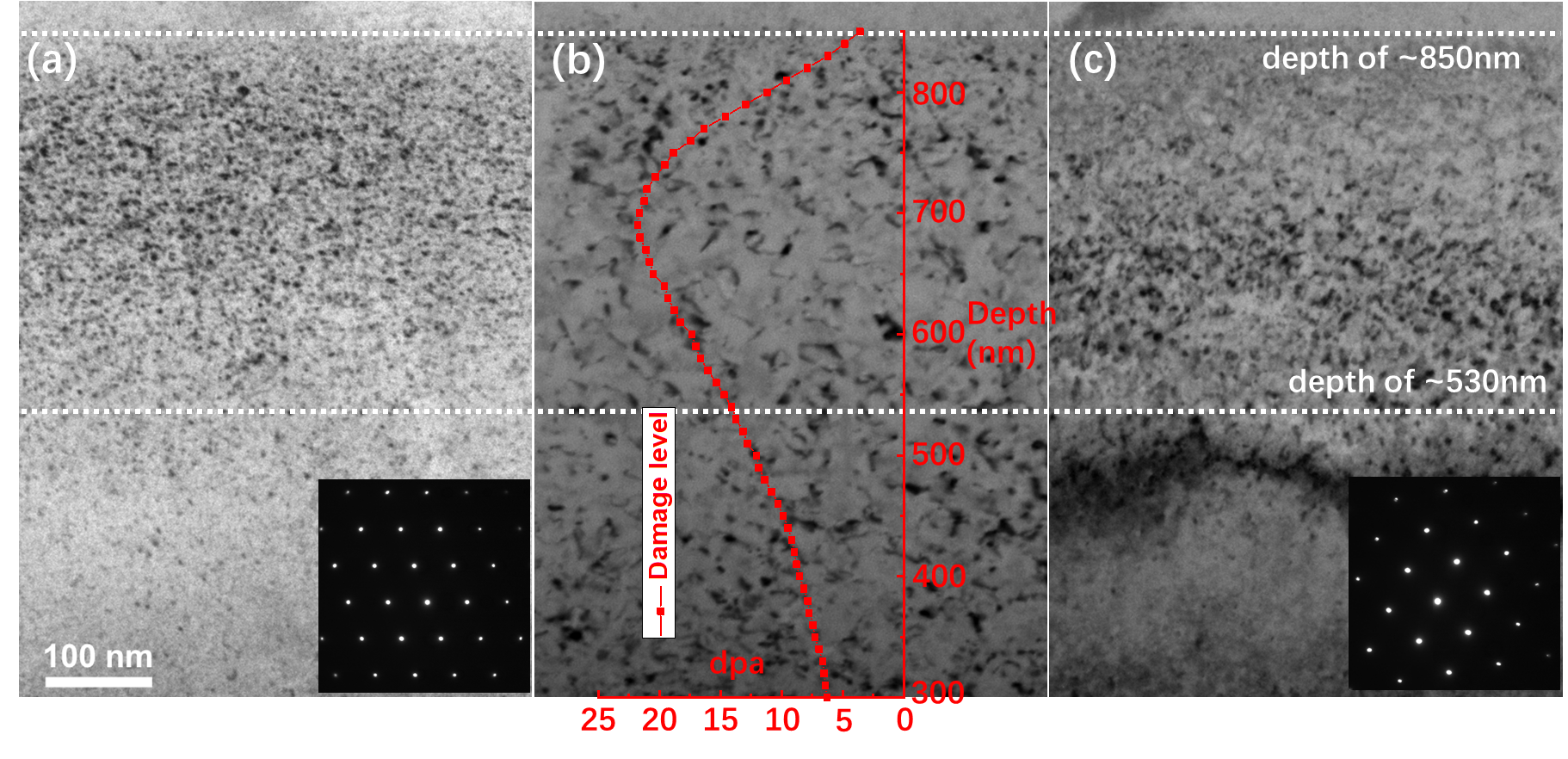Study Confirms Excellent Irradiation Resistance of High-entropy Carbide Ceramics

Figure. BF-TEM images of RT-1E16 (a), RT-1E17 and 650℃-1E17 samples. (Image by ZHU Yabin)
A new study on the irradiation evaluation of high-entropy carbide ceramics (HECCs) has demonstrated their remarkable irradiation resistance at high temperature, shedding new light on the basic understanding of irradiation mechanisms of HECCs.
Emerging as a kind of promising structural materials for future nuclear applications, HECCs are characterized by multiple metal elements in an equal atomic ratio in the cation position, while the C atoms occupies the anion position. Due to the entropy stabilization effects, HECCs exhibit excellent resistance to high-temperature creep, corrosion and oxidation. Additionally, HECCs possess potential irradiation resistance. Thus, HECCs are expected to be used as candidate structural materials for harsh environments, such as the advanced nuclear energy systems.
Recently, researchers at the Institute of Modern Physics (IMP) of Chinese Academy of Sciences have obtained new results on the development and irradiation evaluation of HECCs.
In the experiment, researchers selected (WTiVNbTa)C5 HECC as a model material and synthesized the samples with high relative density by the Spark plasma sintering (SPS) method. For the sintered bulks, all the elements were homogeneously distributed at the micrometer level.
Researchers then carried out the irradiation resistance evaluation of (WTiVNbTa)C5 on the Heavy Ion Research Facility in Lanzhou (HIRFL), the Low Energy Highly-Charged Ion Accelerator Facility (LEAF) and the 320 kV platform for multi-discipline research with highly charged ions.
The study confirmed that HECCs possess excellent resistance to irradiation induced amorphization, and the dynamic annealing effect at high temperature can greatly reduce the structural damage caused by irradiation. Moreover, according to the experimental results, the irradiation induced microstructure damage and its influence on the mechanical properties of HECCs were discussed.
These achievements provide important scientific basis for the study of irradiation mechanisms of HECCs and the development of novel irradiation resistant nuclear energy materials.
The related results have been published in Journal of the European Ceramic Society.
Contact Information
Institute of Modern Physics
Email: fangliu@impcas.ac.cn


 甘公网安备 62010202000713号
甘公网安备 62010202000713号


